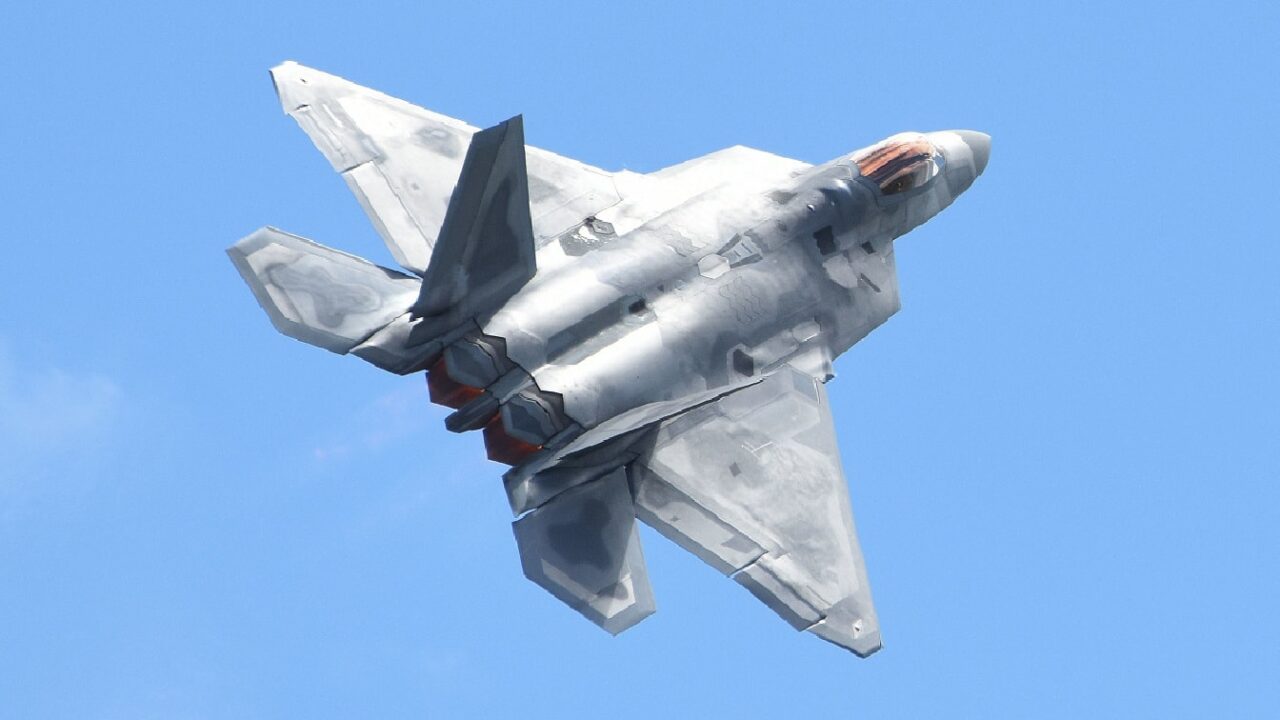The Lockheed Martin F-22 Raptor has been widely touted as the most capable air superiority fighter in service today.
(Subscribe to 19FortyFive’s New YouTube Channel here.)
According to the aerospace and defense giant, “The Collier Award-winning F-22 Raptor has delivered on its promise to provide unprecedented air dominance,” while the United States Air Force – the sole operator of the fifth-generation stealth fighter – boldly proclaimed: “The F-22 Raptor is a combination of stealth, supercruise, maneuverability, and integrated avionics, coupled with improved supportability, represents an exponential leap in warfighting capabilities.”
The Air Force further has further suggested, “The Raptor performs both air-to-air and air-to-ground missions allowing full realization of operational concepts vital to the 21st century Air Force.”
Sadly, there might be a problem.
F-22 Hype? Many Raptors Can’t Fight
Many would argue, that much of what the service has stated about the aircraft is pure hyperbole – and to date, the F-22 has never actually engaged in air-to-air combat.
We don’t know how it would perform in actual combat operations, and can only take Lockheed Martin and the Air Force at their word.
This fact is true of many combat systems, but yet other aircraft platforms including the F-15 Eagle and F-16 Fighting Falcon have proven combat histories.
All this might be a moot point, but this month, the Air Force has pushed to allow Congress to allow it to get rid of 32 Block 20 F-22s in its 2024 budget – arguing that those aircraft can’t actually be used in combat. The service has suggested it would require too much effort and cost too much to get those fighters ready for battle.
“They will never be a part of the combat force. They don’t have the most modern communications. They don’t shoot the most modern weapons. They don’t have the most modern electronic warfare capabilities,” explained Lt. Gen. Richard Moore, deputy chief of staff for plans and programs for the Air Force, at an event at the Mitchell Institute for Aerospace Studies last Thursday, Defense One first reported.
To that end, the Air Force wants to shed nearly three dozen Raptors from its budget.
“There’s a lot of thought that it’s too early to be walking away from fifth-gen[eration] aircraft, and the Block 20s certainly are, but they are not the Block 30/35 aircraft,” Moore added. “They are not the fifth-gen Air Force that we’re going to carry into combat, and it was a little bit of a difficult choice, but a choice that we made nonetheless, because we believe it’s imperative to get to the future.”
Looking to Save Money for the NGAD
By retiring the 32 F-22 Raptors, the Air Force could save roughly $485 million a year or $2.5 billion over the next five years. That money could be directed to fund the Next Generation Air Dominance (NGAD) program, which has been described as a system of systems that will include a six-generation fighter and autonomous support aircraft.
Should lawmakers block the Air Force effort to cut the claws on the Block 20 Raptors, the service could be short about $500 million in planned savings, Moore suggested. That money has to come from somewhere he added.
It also isn’t just the potential savings from retiring those aircraft – but the cost it would require to bring the Block 20 F-22s up to combat capability.
It would cost an estimated $3.5 billion and could take a decade of work just to get started. Moore further suggested it would put stress on Lockheed Martin, which is now producing the F-35 Lightning II. The company, which is not “fully staffed” with engineers, might be then forced to pull talent from the F-35 Block 4 program to work on the F-22.
“That is a trade to us that doesn’t make any sense at all—to upgrade aircraft a decade from now at great expense while impacting the F-35 Block 4 at the same time,” Moore noted.
Right Fighter, Wrong Time
The single-seat, twin-engine, all-weather stealth tactical fighter aircraft was selected by the United States Air Force as a result of the Advanced Tactical Fighter (ATF) program. Originally designed as an air superiority fighter, the F-22 Raptor also has ground attack, electronic warfare, and signals intelligence capabilities.
As noted, it has never been employed in an air-to-air combat role. Still, in September 2014, F-22s performed its first combat sorties by conducting some of the opening strikes of Operation Inherent Resolve, the American-led intervention in Syria. During the combat mission, F-22 aircraft dropped 1,000-pound GPS-guided bombs on Islamic State targets near Tishrin Dam.
The United States Air Force had initially planned to buy 750 ATFs. However, the program was cut to 187 operational aircraft in 2009 due to its high costs, a lack of air-to-air missions at the time of production, and the development of the more affordable and versatile F-35 Lightning II.
MORE: Video – Ukraine Has Massive New NATO ‘Cannon’ Ready To Fight Russia
MORE: ‘Americans Will Pay The Price’: One Democrat Is Angry At Joe Biden
MORE: Could Joe Biden Get Impeached?
Author Experience and Expertise
A Senior Editor for 19FortyFive, Peter Suciu is a Michigan-based writer. He has contributed to more than four dozen magazines, newspapers, and websites with over 3,200 published pieces over a twenty-year career in journalism. He regularly writes about military hardware, firearms history, cybersecurity, politics, and international affairs. Peter is also a Contributing Writer for Forbes and Clearance Jobs. You can follow him on Twitter: @PeterSuciu.

